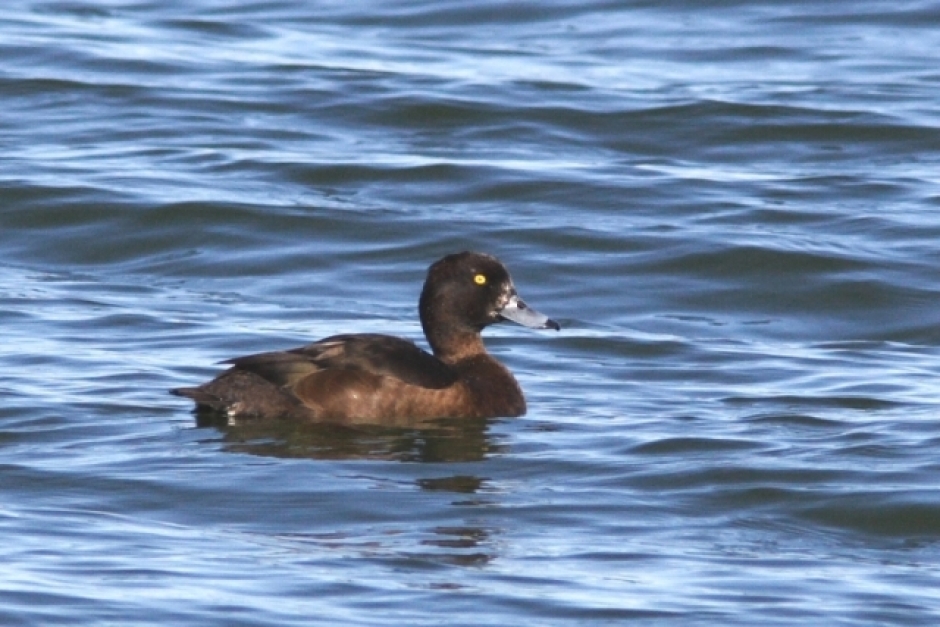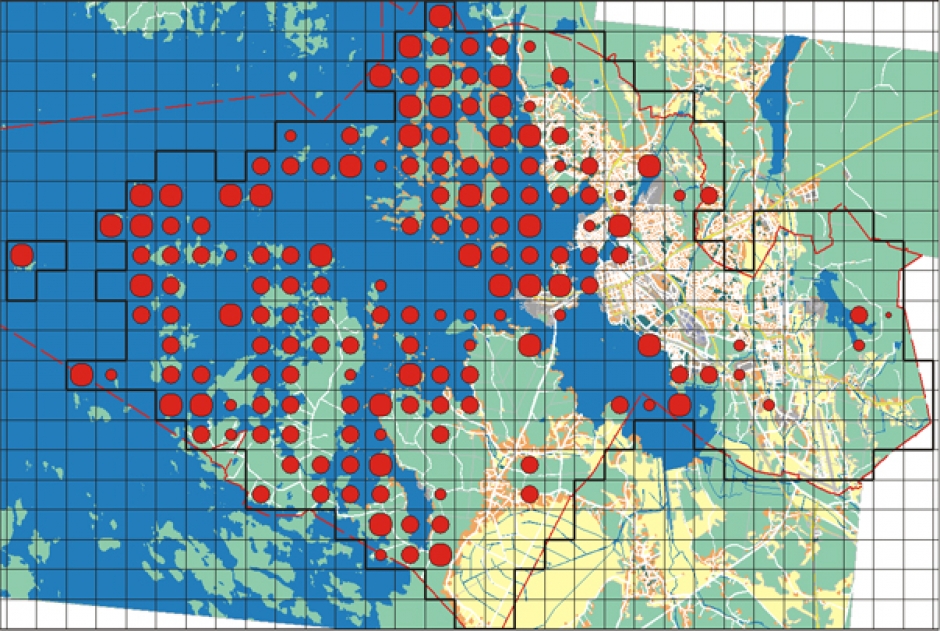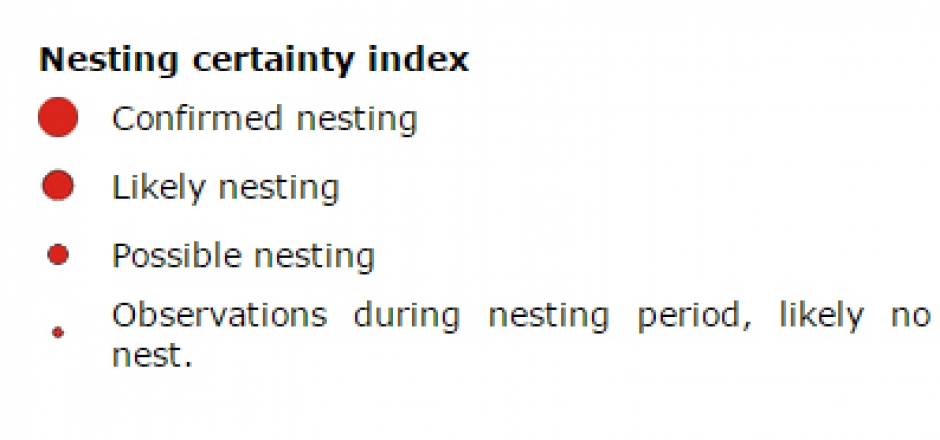Tufted Duck
Aythya fuligula

General information. The tufted duck is easily recognizable due to the conspicuous black and white plumage of the male species. The tufted ducks return to the Vaasa region from wintering in April, seeking the first open waters along the sea coast. As an example, the estimated number of staging birds in the Eteläinen Kaupunginselkä-bay area in May can be expected to exceed into the hundreds. The tufted duck is a vulnerable species according to Finland’s threat classification system.
The tufted duck is one of the most abundant bird species dwelling along the coast. A census carried out in the Torgrund area, in the Vaasa archipelago, indicated that it was the most plentiful duck species in Vaasa.
- Length about 45 cm
- Nests on the ground
- Winters mainly in the southern parts of the Baltic Sea
- Feeds on aquatic animals and seeds from aquatic plants
Habitat. Nutritious lakes and sea bays with low vegetation are preferred habitats of the tufted duck. It thrives in the archipelago in gull and tern colonies. Due to the land uplift, gull colonies gradually relocate over the course of the 5years, with the tufted duck following close behind. This phenomenon continues to be observed within long term studies of birdlife in the Vaasa archipelago.
Distribution in Vaasa. During the survey, the tufted duck was observed in approximately 160 survey blocks, making this species almost as common as the mallard. The majority of the nesting population can be found in the inner and outer archipelago.


